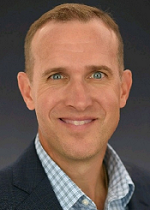Which New Technologies & Training Will Drive Advancements In Clinical Trials?
By Michael W. Young, principal, biomedwoRx: Life Sciences Consulting, and chief marketing officer, ScienceMedia

Many changes are taking place that are having an impact on the conduct of clinical trials. New tools such as risk-based monitoring (RBM), real-world evidence (RWE), and adaptive trials are helping to fix a process that many believe is fundamentally broken. At the same time, trials are becoming more complex and new guidelines are being placed on sponsors.
What will all of this mean for the conduct of trials in 2020 and beyond? My work with ScienceMedia recently provided me the opportunity to speak with Michael Brooks, president of clinical development & commercialization services at Covance. Brooks shared his insights on these topics and several others.
Many experts believe the clinical trial process is fundamentally broken or dysfunctional. What is your view?
 Michael Brooks: I would not say the process is broken or dysfunctional. In many ways, if you look over the last two decades, some really incredible cutting-edge therapies have been developed. This is especially true in immuno-oncology therapy.
Michael Brooks: I would not say the process is broken or dysfunctional. In many ways, if you look over the last two decades, some really incredible cutting-edge therapies have been developed. This is especially true in immuno-oncology therapy.
I believe the underlying challenges are related to development time and cost. It takes a lot of money and time to bring a new treatment from discovery to its availability to patients as an approved treatment. Even when a company is able to get past the regulatory hurdles, they face an additional challenge of getting the products to the intended patient population at a reasonable cost to payers.
So, the system is not broken. We just have to really think about how to shorten the cycle times, reduce development costs, and ensure the product is getting to the intended patients at a reasonable cost. The real issue is that the drug development industry has failed to evolve. It continues to operate similar to the way it did 20 or 30 years ago, with the exception being that we have better analytical tools and now collect data electronically.
As an industry, we need to ensure that we are leveraging things that other industries have been so successful with, such as data analytics, machine learning, competitive collaboration, and working more closely with regulators.
Based on your experience, do you think improved use of tools such as RBM, RWE, adaptive trials, and Bayesian statistics can help to address some of these challenges in the clinical trial process?
Brooks: Absolutely. I think these tools will become essential. As a patient is exposed to a product, we have to think about how to get closer to real-time views of adverse events that may be occurring and their response to the administration of the product. Then we have to use that information in near real time to adapt our protocols and treatment cycles for the patients. We need to use less data to get better answers around the effectiveness and safety of these products. Sometimes, what feels like an innovation in our space is fairly rudimentary compared to how other industries use data and real-time analytics. You just need to look at what companies are doing in banking and aviation, as an example.
All these things that you just described are going to be essential for us to have an impact on the cycle times, costs, and access for these new products.
A lot of people acknowledge the increasing complexity of clinical trials in recent years. How exactly is that increase in complexity playing out? Are there simply more and different types of endpoints, or has the entire conduct of trials become more difficult?
Brooks: I think the entire trial space has become much more complex. Many trials now operate on a global landscape. That in and of itself introduces significant complexity to the trial. That may have to do with standard of care, access to patients, the demographics of the patient populations, language barriers, and even interpretations of feedback and information that we're receiving.
Certainly, as you mentioned, the endpoints are becoming much more complex. We are also seeing greater use of exploratory or secondary endpoints as a way to accelerate trials. But that also brings a new level of complexity that must be considered.
If we think about how data is being collected from patients, whether it's through traditional means such as imaging and blood work or through the use of wearables and patient-reported outcomes, those are complexities that we're having to manage. Now, with increasing use of companion diagnostics that are often investigational at the same time as is the product or biologic, that is an additional complexity for the industry.
Despite all these changes, drug developers must understand what questions they’re being asked and how they are trying to answer them. We also have to ensure we protect the integrity of the data from the very beginning of a trial. It's a major problem that we have to solve on a trial by trial basis.
Let’s talk about the use of risk assessments as part of RBM and implementation of quality by design (QbD). How have these strategies actually been implemented into study execution?
Brooks: Pharma companies and CROs are carefully considering their methods, what has worked well and what has not, and the collaboration between pharma companies and CROs. That collaboration has strengthened significantly in the last 20 years.
An example of this is that CROs are now involved in the development of clinical trial protocols and operational strategies much earlier than they used to be. We have cross-functional team members who come together and collaboratively identify potential risks with trial design and risk mitigation solutions. Members might include statisticians, regulatory leads, medical directors, and clinic operations leads. We have also created forums that basically iterate on the protocol to try to apply lessons learned from past protocols and past experiences.
We are considering the patient perspective and creating patient working groups where the patients will come in and tell us how we can most effectively apply a protocol in a real-world setting. They are now telling us what risks they see around administration of a product, the trial procedures, data collection, and the study endpoints. We are also doing a much better job of getting the protocol correct from the very beginning, while recognizing that we still have a long way to go once the trial is up and running.
One of the big changes in regulatory guidelines is the increase in responsibilities placed on sponsor companies. In particular, training should now be more than just a check box; actual comprehension has to be demonstrated. Can you comment on these changes?
Brooks: Regulators certainly had concerns that sponsors were abdicating their responsibility for oversight of clinical trials to CROs. The issue wasn’t that training was not being completed; it was, as you said, that someone was just checking off boxes that said training was done. Now, the expectation is that sponsors not only provide the oversight, but also verify comprehension. When an issue does occur, sponsors must ensure not only that the issue is addressed, but that there is an understanding of the root cause of that issue in order to fully mitigate it across the entire trial.
For example, if performance issues are identified in a set of sites run by one CRA, not only does the sponsor have to correct the deficiency for that CRA and its site, but it also must understand the underlying issues. Why did it happen? What was the gap? How was that CRA qualified and trained for that trial? What was the oversight of their performance? How can we make sure the issue is corrected?
And all that requires a lot of agility and a real-time response. To do all of that on a global scale can be extremely difficult when you consider all the moving parts that go into a trial.
If you could throw away the current paradigms of protocol training and start over, how would your ideal training look?
Brooks: If we can start from the very beginning, it would be training that is delivered through multiple channels. It would take into account the various ways that individuals effectively learn. It will be integrated into the conduct of our clinical trial, so it is not just a milestone event that occurs at the beginning of a trial and at set points. It would instead be recurring — potentially to the point where people don't even realize they are being trained.
For example, imagine someone is recording data in an EDC environment. I envision that training elements could flow through to them and they could get feedback to help guide them. They could click into environments to watch videos around a particular component of the protocol. There could be almost a choose-your-own-adventure approach to the training, where depending on how people are responding, it would branch out and give more detail to make sure they understand the material. For those who already understand the material well, it wouldn’t have to be as onerous, intensive, or time-consuming as training can be when it is just one fixed channel or set methodology.
My last question relates to getting patients to comply with protocols. It seems we need to do a better job of helping patients understand why they need comply. One clinical operations executive gave me an example of this. A protocol may direct patients to fast for x number of hours before taking the investigational drug. The protocol doesn’t give any explanation of why the patient must fast, so it may be treated as a situation where if you don’t fast, it’s no big deal. But, if you dig into the investigator’s brochure, you find that a preclinical study found taking the IP with food decreases the absorption by 40 percent.
Brooks: That's a great example, and I’ll expand it even further. I think the vast majority of clinical investigators and coordinators take their jobs very seriously. They do everything they can to read the materials we provide to them. But as you know, the material is very dense. Sponsors must do a better job of distilling the material down to the key components, like the information in the example you gave. Highlighting that information will benefit everyone — especially the investigators who have a similar responsibility as sponsors. They're accountable for everything that happens within their institution or by their research staff. Anything we can do to help those investigators train their teams — to call out the four, five, or 10 key provisions and the reasons behind them — will help our clinical trial integrity and help investigators with the integrity of their research sites.
About The Author:
 Michael W. Young is principal of biomedwoRx: Life Sciences Consulting, a commercialization consultancy operating at the intersection of clinical strategy and commercial objectives. His recent work has focused on bringing novel oncology and hematology therapeutics to market, improving patient recruitment through digital technologies, and solving e-learning issues facing clinical trial professionals. Young is also chief marketing officer for ScienceMedia. In addition, he has held VP roles at Klick Health, PAREXEL, and PPD in business development and partnership management. He serves on the Clinical Leader Editorial Advisory Board, the Life Science Trainers & Educators Network Advisory Board, and the San Diego Healthcare Businesswomen’s Association Advisory Board. For 20 years, he has served on the board of directors of the Cutaneous Lymphoma Foundation and advises several other patient advocacy groups.
Michael W. Young is principal of biomedwoRx: Life Sciences Consulting, a commercialization consultancy operating at the intersection of clinical strategy and commercial objectives. His recent work has focused on bringing novel oncology and hematology therapeutics to market, improving patient recruitment through digital technologies, and solving e-learning issues facing clinical trial professionals. Young is also chief marketing officer for ScienceMedia. In addition, he has held VP roles at Klick Health, PAREXEL, and PPD in business development and partnership management. He serves on the Clinical Leader Editorial Advisory Board, the Life Science Trainers & Educators Network Advisory Board, and the San Diego Healthcare Businesswomen’s Association Advisory Board. For 20 years, he has served on the board of directors of the Cutaneous Lymphoma Foundation and advises several other patient advocacy groups.
